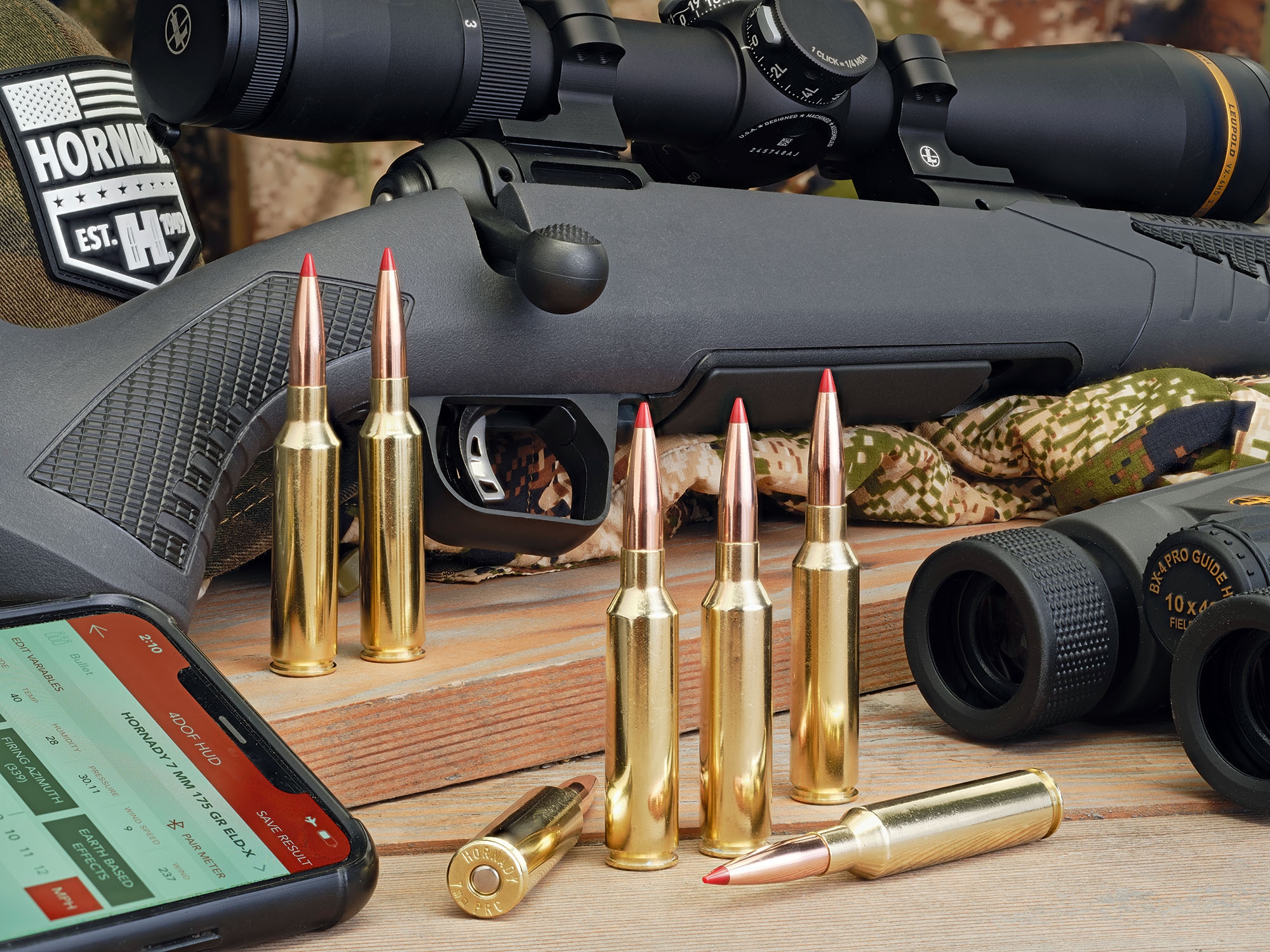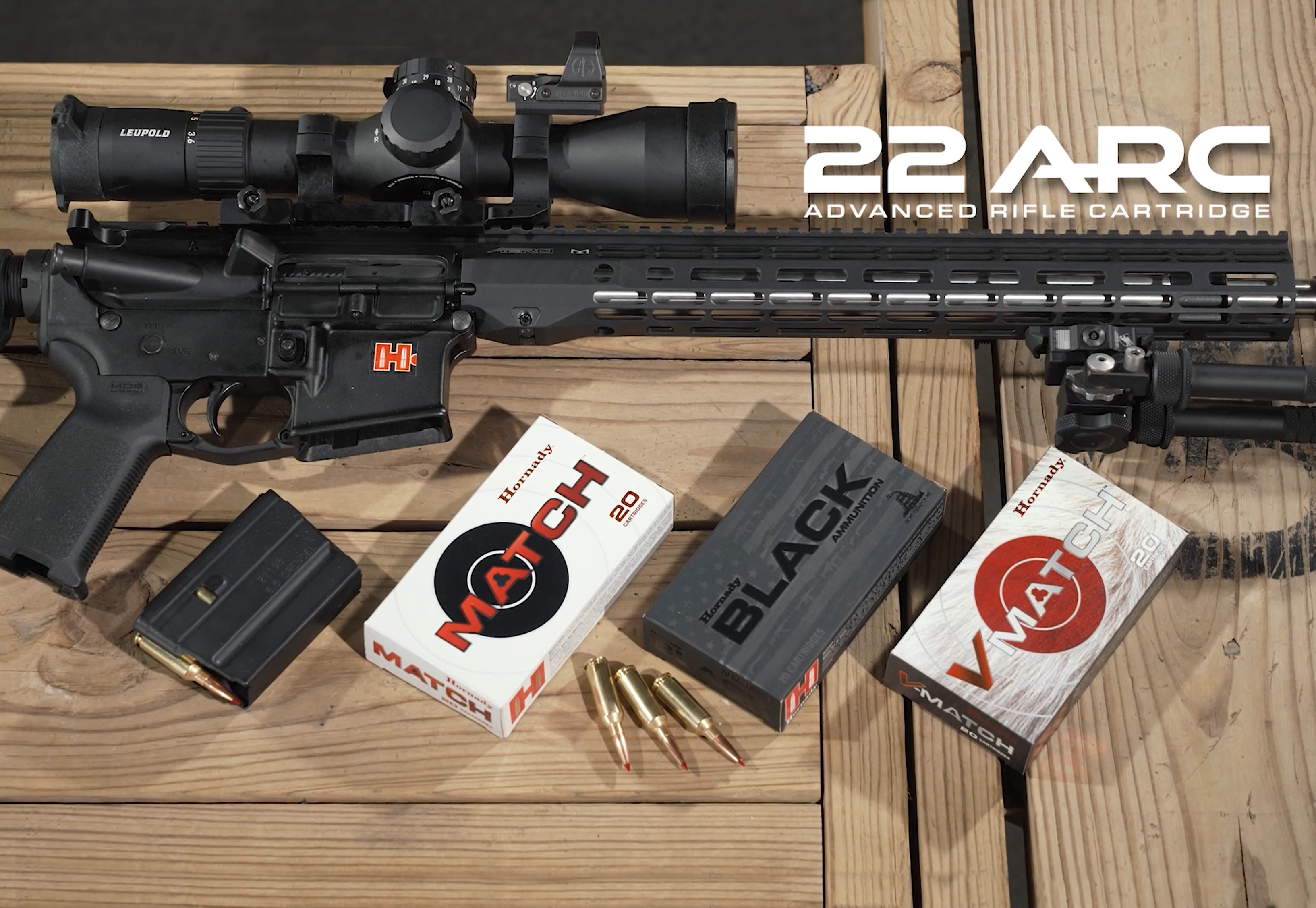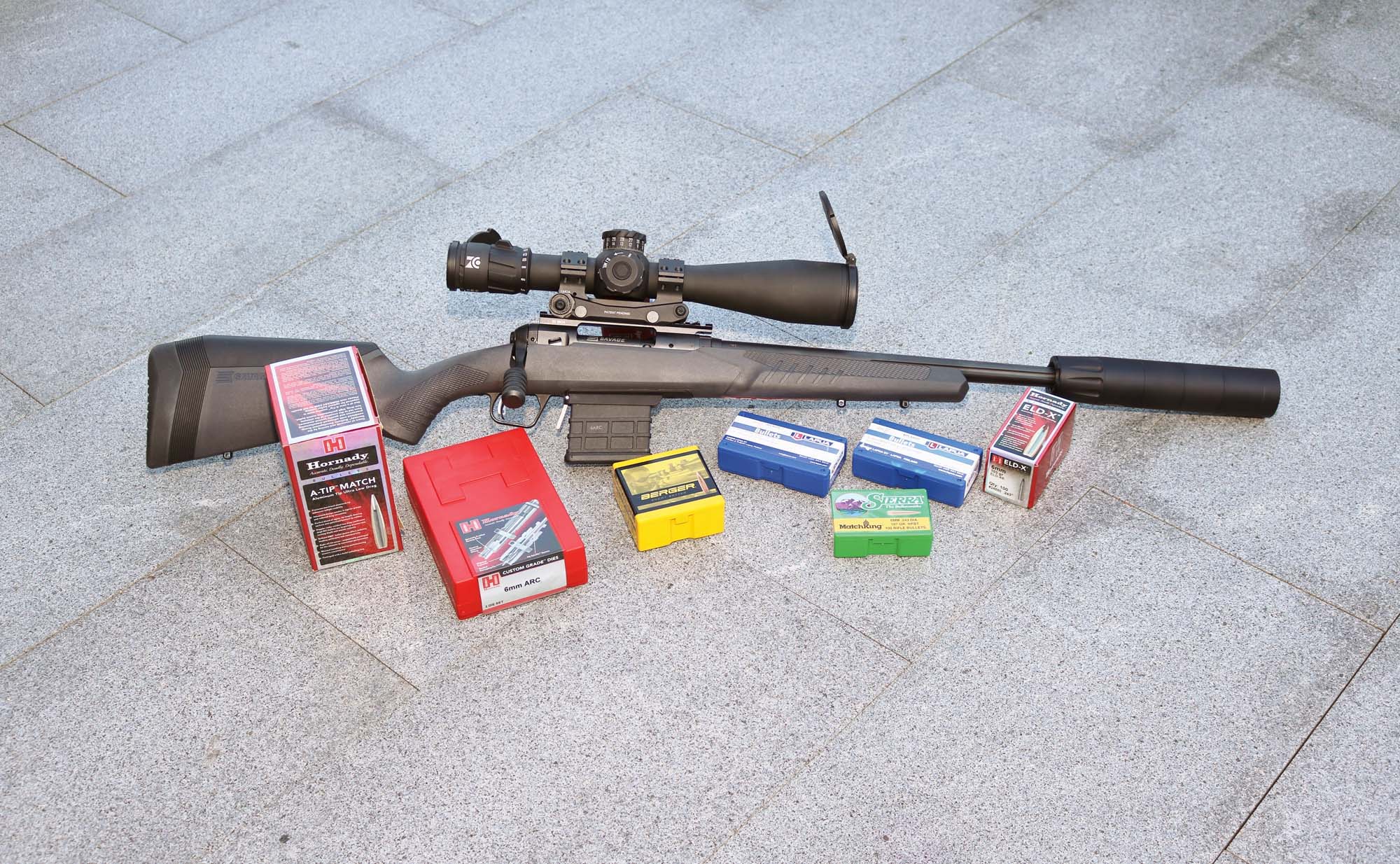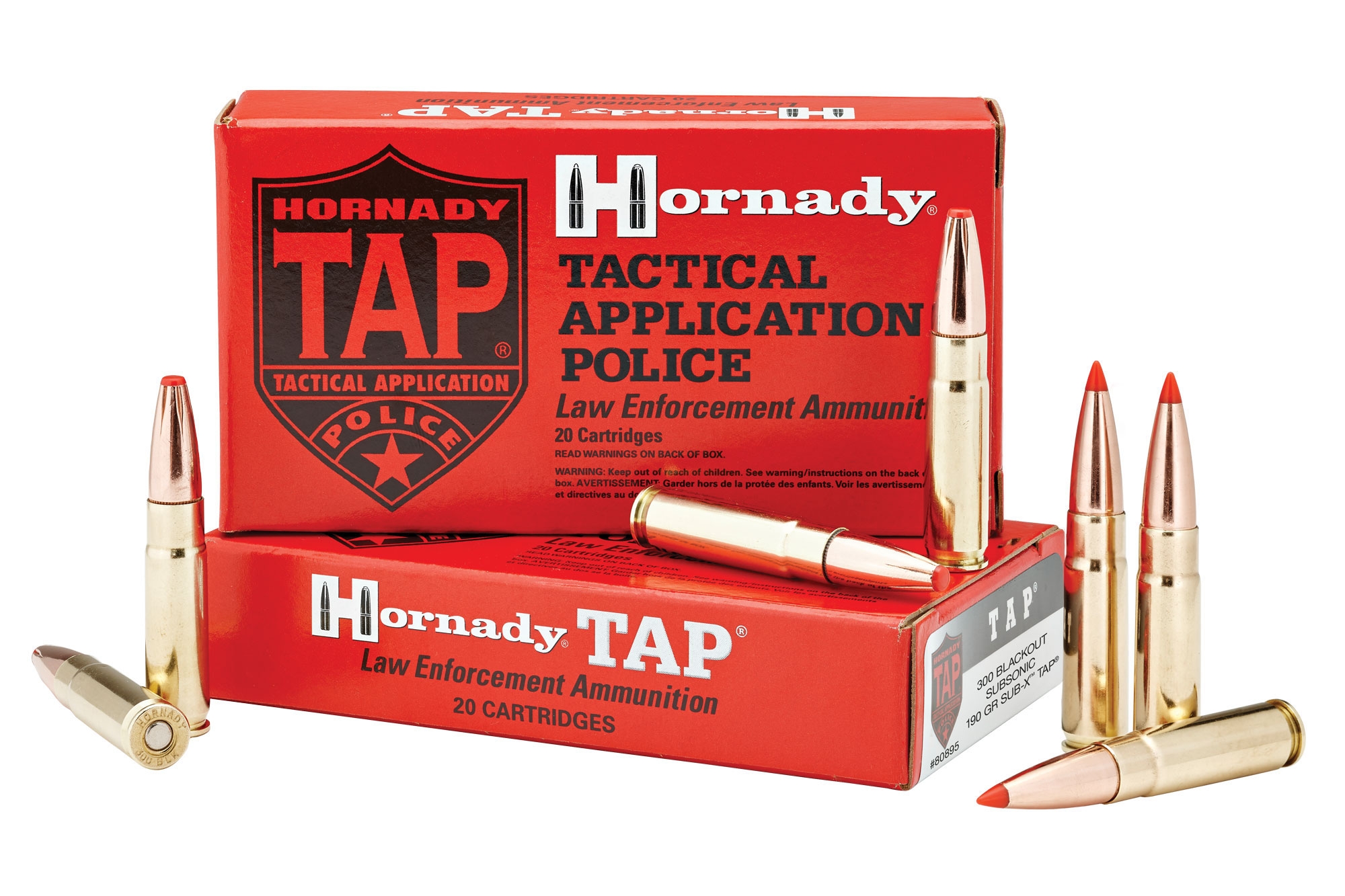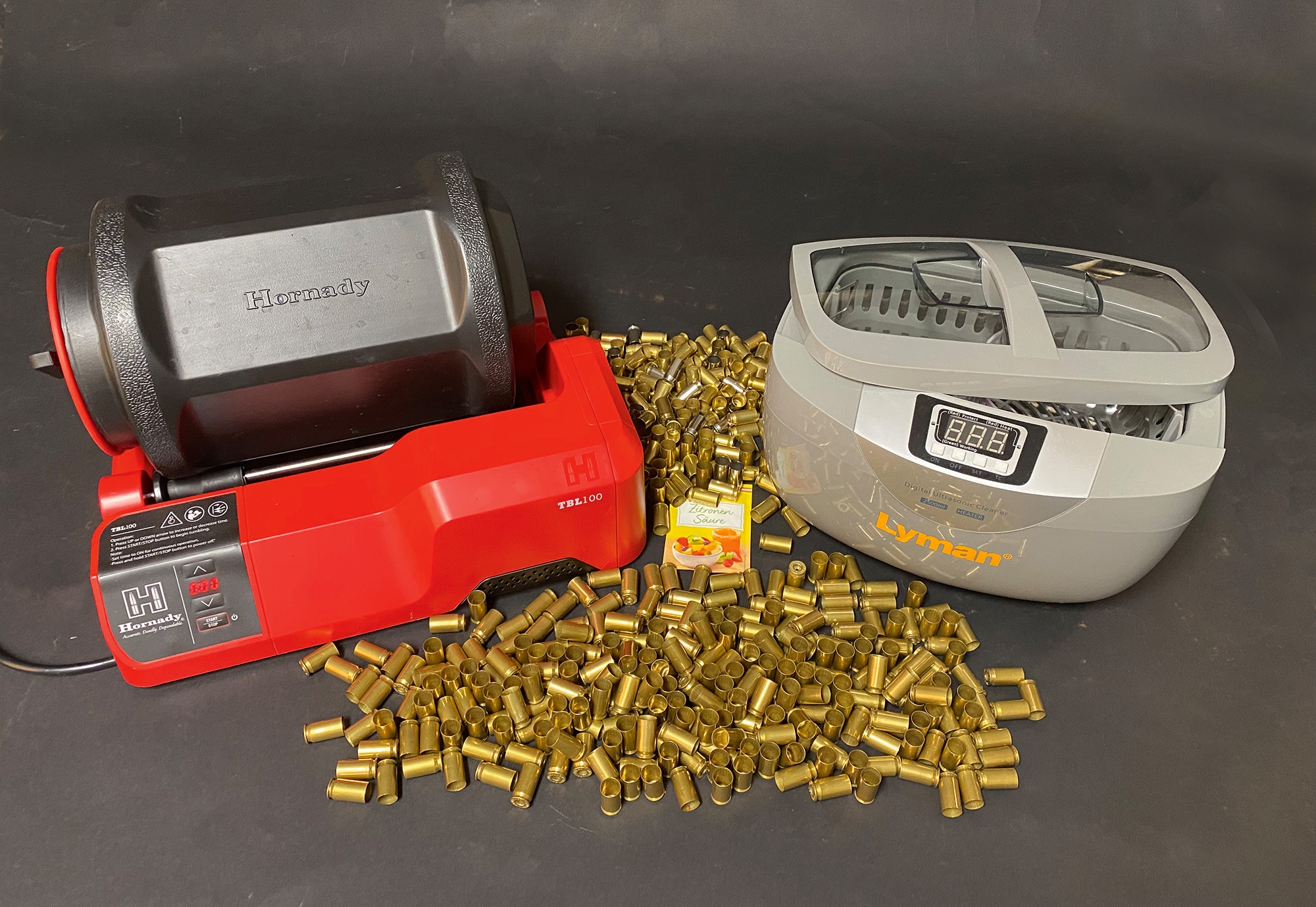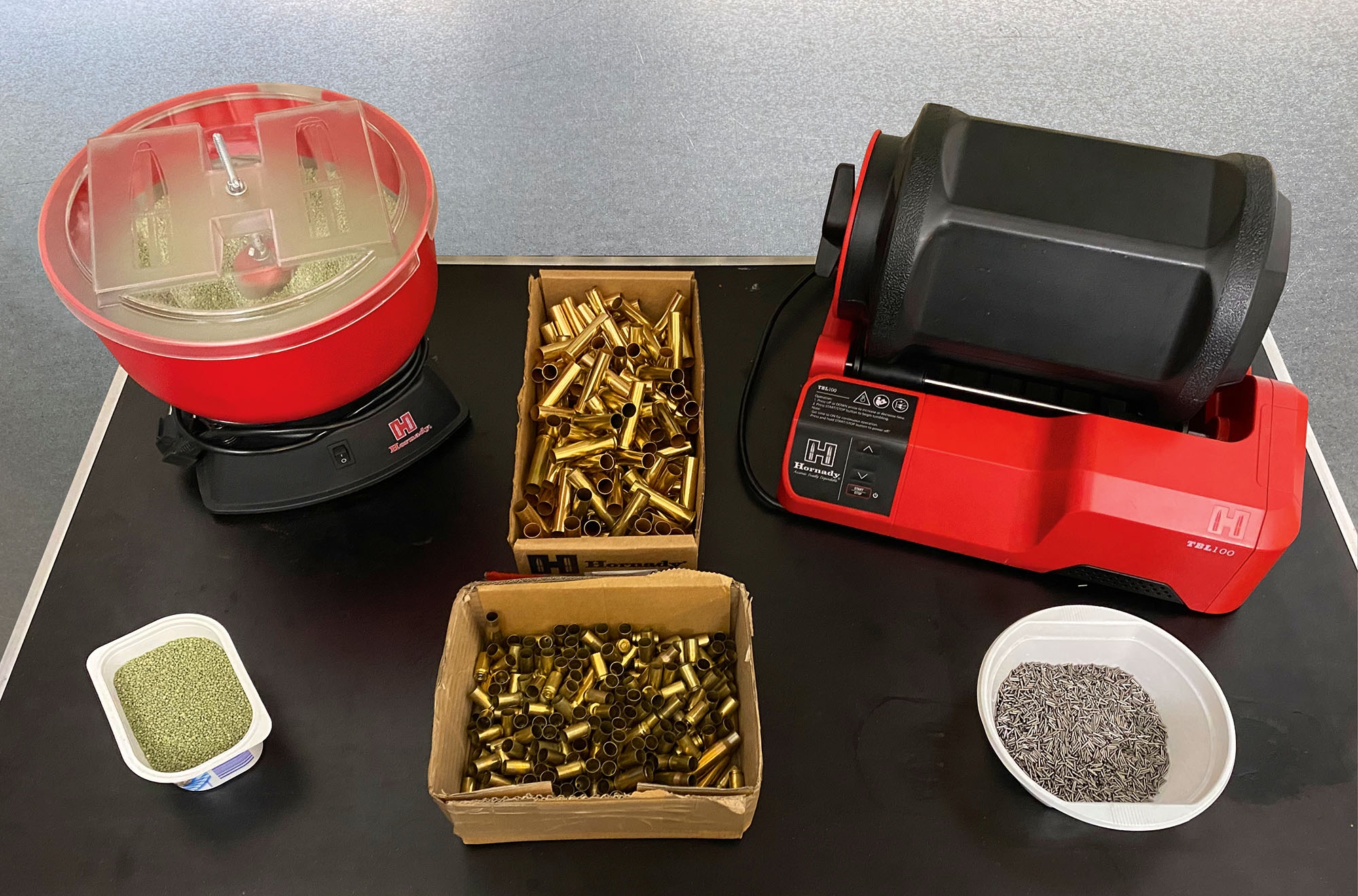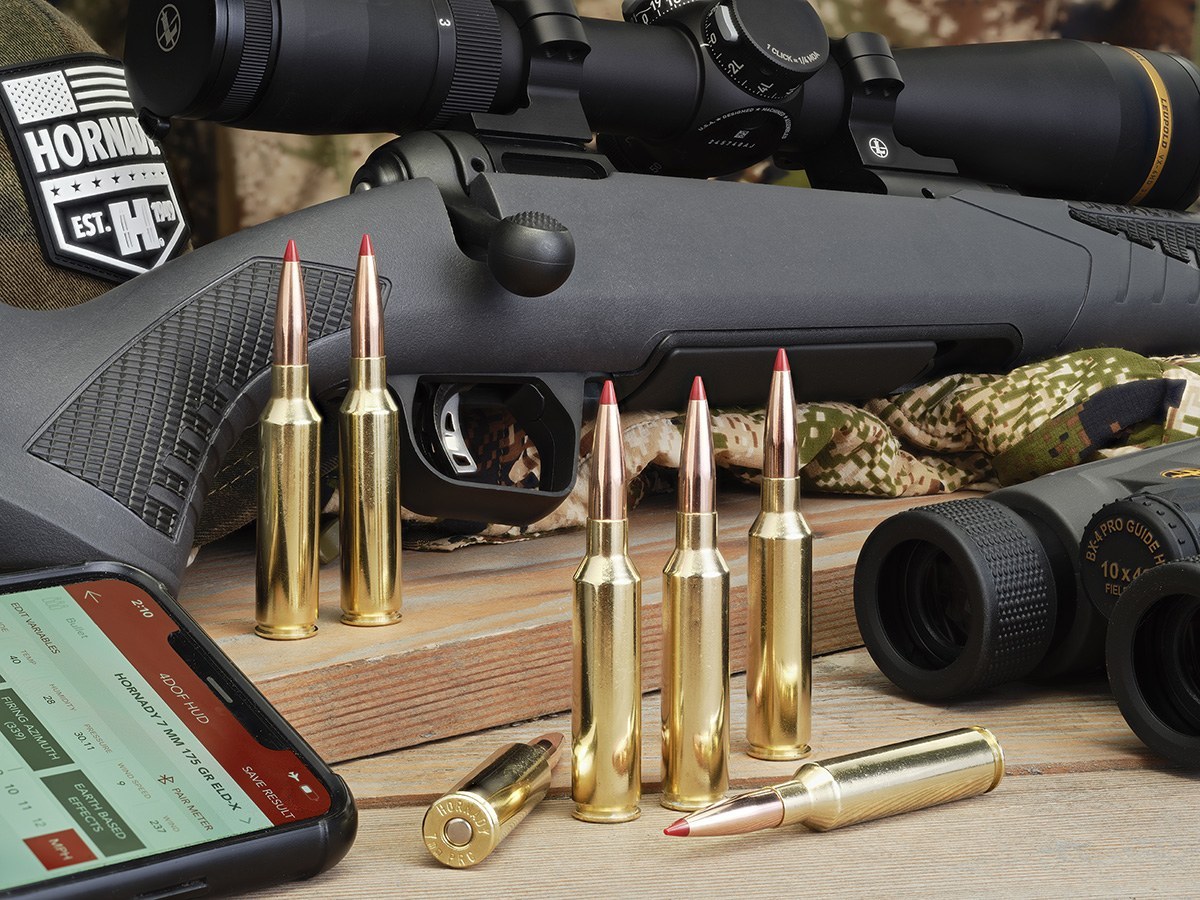We conducted our driven hunt caliber comparison with two different loads: in .308 Win. caliber, the Hornady Superformance International with 150 gr/9.7 g GMX (lead-free) bullet, and in 6.5 Creedmoor the Hornady Superformance with 120 gr/7.8 g GMX bullet (also lead-free). This was at the 50-meter range typical of driven hunts.
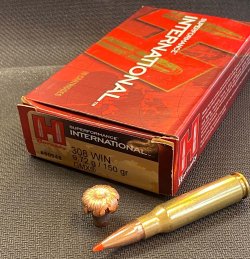
150 grain GMX bullet.
The lead-free test loads: Hornady GMX Superformance International in .308 Winchester and GMX Superformance in 6.5 Creedmoor in detail
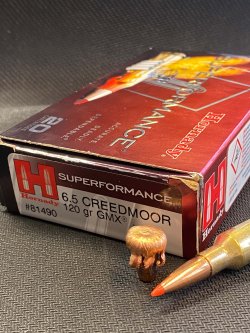
What do you need to know about the .308 Win. 150 gr GMX Superformance International? One of the most powerful lead-free .308 Win. loads on the market, it enters the firing test with a v0 of 872 m/s from a 61-cm proof barrel. In the all4hunters.com test, we fired the Savage Impulse. With a v0 of 869 m/s from the 46-cm Savage Impulse barrel, the 308 Win. 150 gr./9.7 g GMX Superformance International loses only 3 m/s compared to the proof barrel. This speaks volumes for the Superformance powder technology. On the target at 50 meters, the streamlined bullet (G1 BC .415) loses only 37 m/s. At 200 meters, that would be 148 m/s.
In contrast, the 6.5 Creedmoor 120 gr GMX Superformance exits at 930 m/s from the 61-cm proof barrel and 898 m/s from the 50-cm barrel of the Savage Impulse. Despite the lighter weight, it loses only 32 m/s on the target at 50 meters because of better streamlining (G1 BC .480). At 200 meters, the v-loss is only 98 m/s. Which illustrates one of the advantages of the 6.5mm caliber. Although, as expected, the Creedmoor has a better instantaneous effectiveness compared to the .308 thanks to its higher impact velocity, it still also has the better depth effect, due in part to the more favorable sectional density of the 6.5 bullet. But once again from the beginning.
Caliber discussion: .308 Winchester vs. 6.5 Creedmoor in a hunting context
Why is this important to know? Many hunters don't give the smaller, fast calibers much credit when it comes to instantaneous and, more importantly, depth effectiveness. This is mainly due to the experience/narratives in combination with rather soft traditional semi-jacketed bullets, which provide your effect too quickly. Modern bullet designs such as, among others, the lead-free deformation bullets, which achieve a controlled energy conversion with depth effect even at high impact velocity, could only implement the advantages of the smaller, faster calibers with lower recoil, flatter trajectory and higher velocity on target without disadvantages.
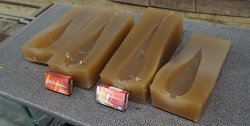
6.5 Creedmoor (Hornady 120 gr GMX Superformance).
As with any bullet that is to be used for hunting, it is ultimately a question of the effectiveness in the game body. We want the fastest possible energy release, with effective tissue destruction and optimum depth effectiveness. If you then consider the game body as a resistance with different sizes (roe deer is narrower than a red deer), you could certainly continue this caliber discussion for hours without even coming to a rudimentary result. The .308 Win. has not been out of the hunter's mind since the 1970s at the latest. The caliber is effective and will continue to be used because it combines many advantages. Logically, a new caliber will have a hard time. Especially in Europe, the 6.5 Creedmoor is certainly not ready to replace the .308 Winchester, but the values we achieved in our test certainly show its strengths, which make it a good alternative. It is quite possible to achieve a lot of instantaneous but also depth effectiveness with a lighter and faster bullet than with more bullet weight. Assuming the right bullet design. Hornady's 6.5 Creedmoor offers more effectiveness and performance with less powder use. The secret to Creedmoor load is its compact design and resulting higher velocity, which it retains better at distance due to better ballistic coefficients, resulting in apparent more impact in the game body. Just take a look at the photo of the shooting test on ballistic soap. The maximum expansion of the cavity is reached earlier with the 6.5 Creedmoor than with the .308, and the length of the cavity is also somewhat longer with the Creedmoor than with the .308, even though the 6.5 Creedmoor is about 20% lighter.
The statement that more weight achieves more effect may therefore have to be questioned on the basis of this test


Digression: long range shooting and the caliber choice
For many hunters in Europe, shooting distances of 30-70 meters for driven hunts or 100-150 meters for raised hide and stalking are the norm. If you experience the pleasure of mountain hunting or leave behind your hunting tracks in Africa, you have to master completely different shooting distances. This is not because you "want" to shoot farther, but "have to shoot farther" to take advantage of the opportunities that present themselves. Anyone who wants to aim long shots must address the issues of "long range shooting practice" and "caliber selection". Even the springbok or chamois can move a good one meter at 250 meters shooting distance in 0.25 seconds. In such a case, a supposedly well-placed shot is already so far behind the game shoulder that a follow-up search is assured. As you can imagine, tracking in the mountains or in Kalahari with up to 40 degrees in the shade is not an easy task. In the mountains the physical strain for man and dog, in the hot midday sun of Africa it is the climatic conditions that make the sweat dry so fast that it is a real challenge even for bloodhounds to search successfully on the dried out sweat track. Whatever you decide, you can't go wrong with either of the two loads – however, the speed of the 6.5 Creedmoor is a small advantage, especially at long ranges.
More information about the used loads can be found on the website of the ammunition manufacturer Hornady.


